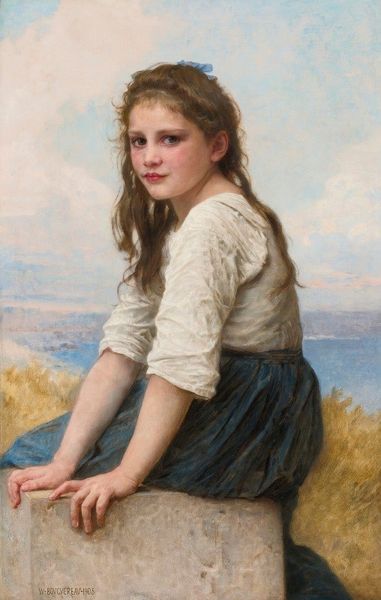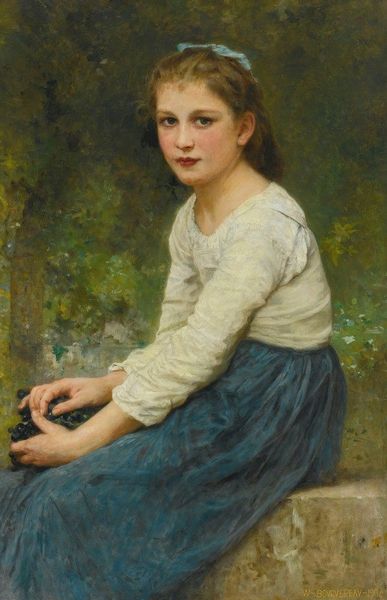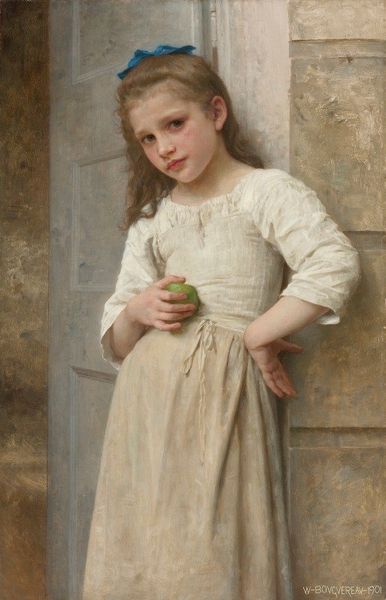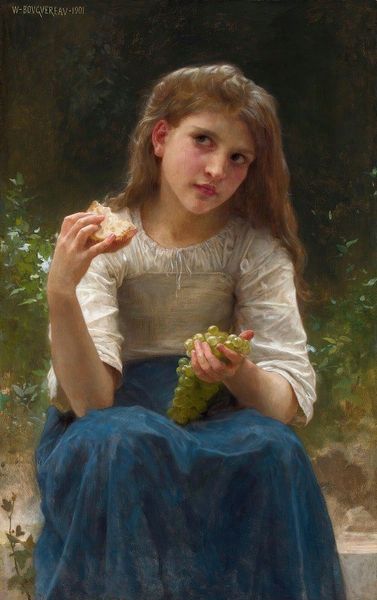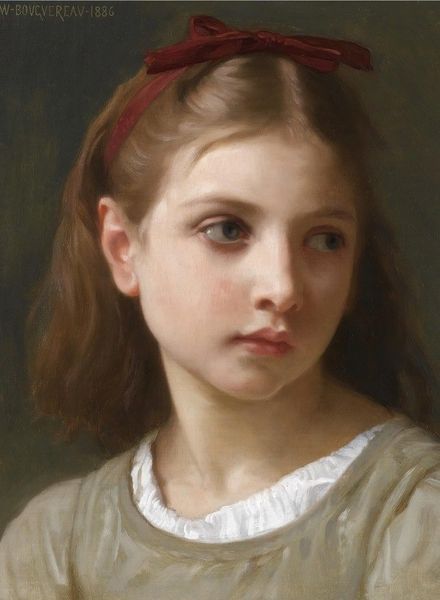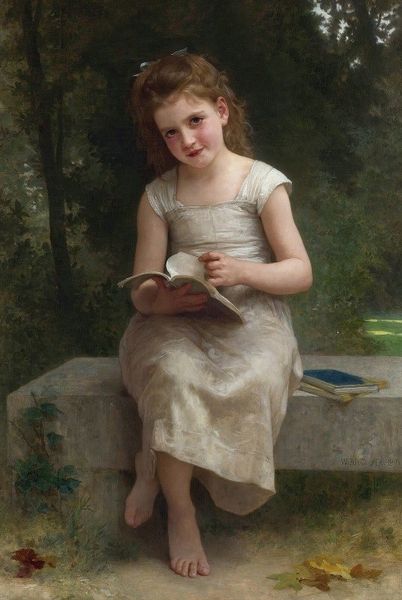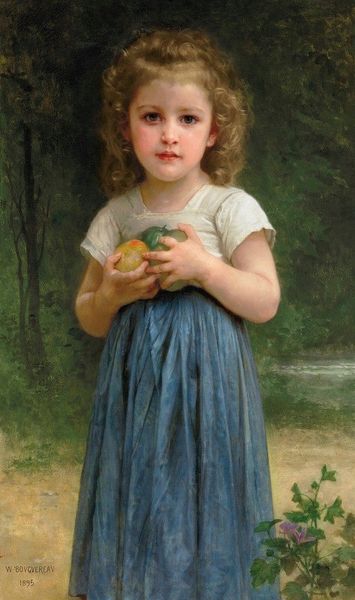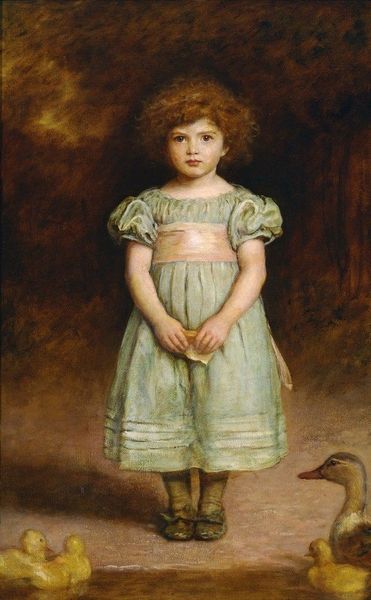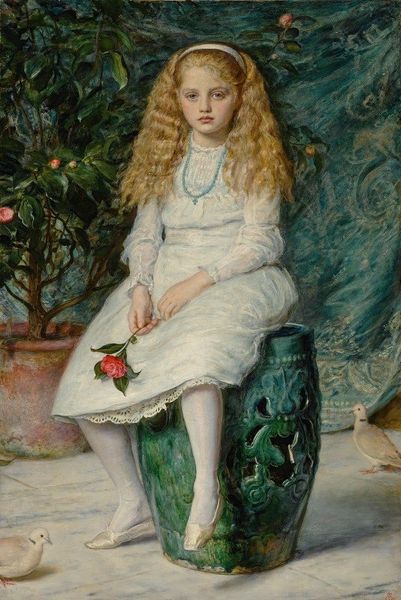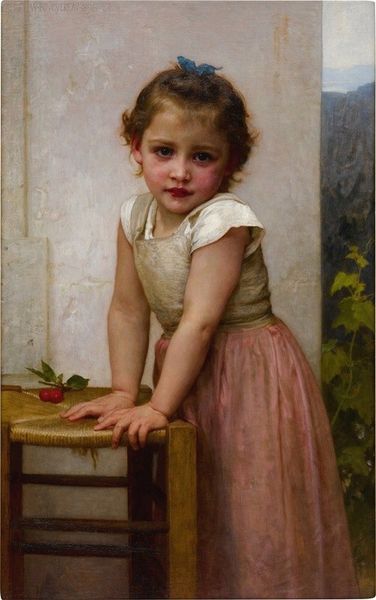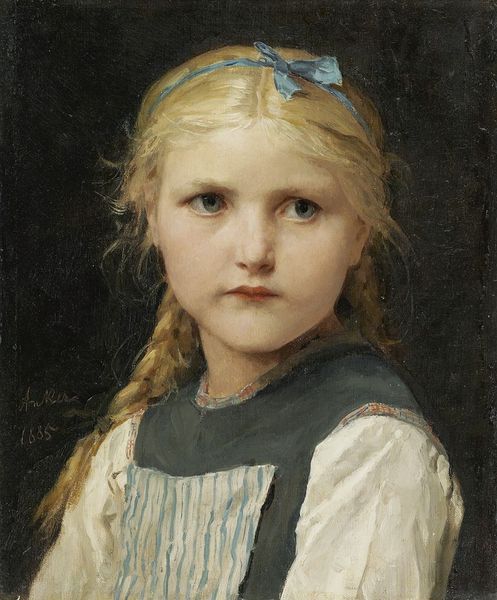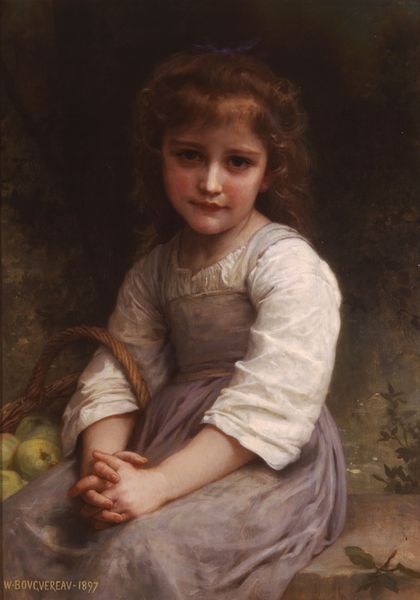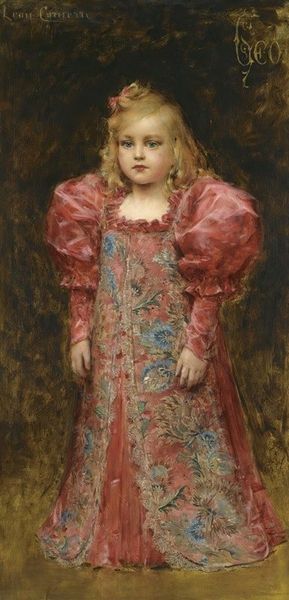
painting, oil-paint
#
portrait
#
figurative
#
painting
#
oil-paint
#
genre-painting
#
academic-art
#
realism
Copyright: Public Domain: Artvee
Editor: Here we have William Bouguereau's "Girl with an Apple," painted in 1905. It’s an oil painting depicting a young girl in simple clothing holding an apple. She seems rather self-possessed and still, and something about her gaze feels very direct. What's your take on this work? Curator: What strikes me immediately is the context of Bouguereau as an artist working within a very specific, often critiqued, academic tradition. How does this idealized portrayal of youth serve the dominant ideologies of his time? What is the relationship between this kind of imagery and the socio-economic realities for young girls then? Think about class and labor. Editor: I hadn’t really considered it that way. I was focusing more on the seemingly innocent portrayal. Curator: But is it truly innocent, or does it participate in constructing an idea of ideal femininity? And, importantly, for whom? Who benefits from the circulation of such images? Notice the hyper-realistic technique employed here, aimed at capturing beauty. But whose beauty are we celebrating, and at whose expense? The girl's direct gaze, as you noted, is interesting. Does it empower her, or does it become another form of objectification, inviting the viewer to consume her image? Editor: I see what you mean. It makes you think about the power dynamics at play between the artist, the subject, and the viewer, especially considering the time period. It feels much less straightforward now. Curator: Precisely. It is critical to view art as active participants within larger conversations, influencing social norms. What at first seems beautiful, even sentimental, gains much deeper and sometimes uncomfortable meanings once we unpack its underlying ideologies. Considering how notions of beauty and innocence have been historically used to disempower individuals and communities might inform our contemporary sensibilities. Editor: Thank you! I now have a better sense of not just what's on the surface but the possible layered and complicated interpretations behind such art. Curator: My pleasure, it is these types of questions that broaden and enhance our understanding of art's continuing impact.
Comments
No comments
Be the first to comment and join the conversation on the ultimate creative platform.
